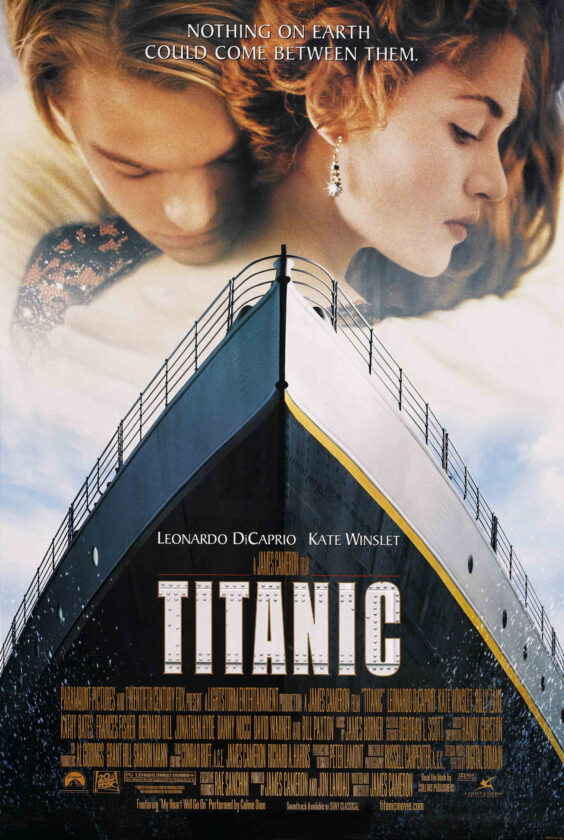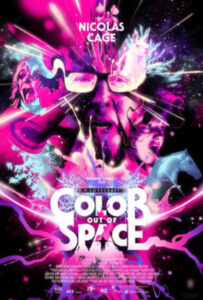‘Titanic’ love story is a perfect vehicle to showcase ship’s tragedy

A few weeks back, we polled folks for our podcast — The Express Compressed — on what their favorite “chick flick” was. Among the options that were suggested and voted on was 1997’s “Titanic” directed by James Cameron and starring a young Kate Winslet and Leonardo DiCaprio.
This intro serves not only as a segue into my Throwback for this movie, but also a bit of a shameless plug for our podcast (which you could certainly check out on Spotify and Apple Podcast).
Everyone knows about the devastating fate of the luxury ship, which sank to the bottom of the northern Atlantic in 1912. I, for one, know way more than the average person because I have a younger brother who was absolutely obsessed with the famous ship and its wreckage for a long time as a kid.
In 1997, Cameron decided to create a blockbuster, dramatic story surrounding the events of that cold April night.
Mind you, this movie is a whopping 3 hours and 15 minutes long. At the time, popular movies weren’t typically that long — maybe an hour and a half to two hours at most. This movie, however, was large enough that when VHS tapes were still popular it took TWO tapes to fit it all.
“Titanic” is told through narration by nearly 101-year-old Rose Dawson Calvert (played by Gloria Stewart) who shares her story of survival from the fated ship with her granddaughter, Lizzy, and treasure hunter Brock Lovett (Bill Paxton).
Lovett has spent years at the Titanic’s wreck attempting to find the lost “Heart of the Ocean” — a diamond so large and well crafted it’s considered to be worth more than the Hope Diamond. The last anyone knew it was purchased by a Pittsburgh steel company owner for his fiancee, Rose DeWitt Bukater, prior to their trip on the luxury ship.
Lovett doesn’t find the diamond in his constant search of the wreckage, but does find a drawing of a nude woman with the diamond around her neck.
Elder Rose sees the drawing while at home with Lizzy and soon gets into contact with Lovett — though many of his crew are skeptical of her story.
That changes, however, while on board a ship just above the Titanic’s wreckage, where Rose tells the tale of her survival — and losing the love of her life.
The majority of the movie from that point on follows young Rose as she boards the Titanic in Europe, heading to New York City where she’s facing a life of unhappiness with her pretentious future husband Caledon Hockley (Billy Zane) and wealth-driven mother Ruth (Francis Fisher).
While aboard the ship, Rose finds the trappings of her upper class life to be too much, and her unhappiness drives her to consider jumping from the ship into the Atlantic.
She’s talked down, however, by young artist Jack Dawson (DiCaprio), who convinces her she’s better off not jumping into those frigid waters.
After Rose convinces Cal and other men on the ship that Jack was only trying to save her, he’s invited to dinner.
Rose and Jack’s romance from the start is definitely a “love at first sight” kind of deal. Jack introduces Rose to the idea of a life outside of the path that was set for her with his relaxed attitude and slightly reckless nature.
Meanwhile, Rose is wrestling with the weight of responsibility her mother has put on her shoulders. Her late father placed the family in debt and without her marriage to Cal, all would be lost (at least from her mother’s perspective.)
All while this romance plays out, we get to witness the oncoming nightmare that is the large ocean liner — claimed to be unsinkable — heading towards the fated night it would strike an iceberg, dooming thousands to a cold and watery death.
There’s no denying that Rose and Jack’s tragic love story is the focal point to this story. And Winslet and DiCaprio do a phenomenal job showcasing the passionate, pure love Jack and Rose feel for one another. However, I loved how Cameron used this romance as a vehicle to branch out into the true horrors of the crash.
There are scenes where Captain EJ Smith (Bernard Hill) is convinced by the ship’s managing director J. Bruce Ismay (Jonathan Hyde) to light the ship’s final boilers in an attempt to speed up its arrival to New York. This would lead the ship to be far too fast to avoid the iceberg. (Mind you, these two characters aren’t fictional, they’re very real… though the events may not have played out exactly as depicted.)
You also learn, in casual conversations with Rose, that the ship’s builder — Thomas Andrews (Victor Garber) — had originally wanted all the lifeboats on the ship but was ignored in favor of not letting the deck be “cluttered.” (Again, Andrews was a very real individual.)
There are many real people brought to the silver screen that existed on the Titanic during its fateful voyage. I won’t get into all of them, but I can promise you Cameron ensured they existed in even the smallest of capacities.
All of these side conversations that aren’t directly involved in Rose and Jack’s story really help round out the film. No matter how many times I watch “Titanic” I will always be left with a feeling of unease as soon as the ship sets sail.
We all know what will happen and there’s absolutely nothing that will be changed.
There’s something to be said about that fear and then the mounting panic that begins to occur after the ship strikes the iceberg and Andrews declares it would sink.
Roughly two hours is how long it takes. In that time we watch Rose choose to stay with Jack over leaving with her mother; we see many people decide to face the threat with their best attire and a glass of brandy; and the lower class ticket holders fight for their own survival.
As the bow of the ship sinks further and further, the panic begins to rise and it honestly becomes even more horrific to witness. Cameron didn’t shy away from the truths of this tragedy — from seeing an old couple settle into bed one final time to a young mother soothing her children to sleep with a bedtime story knowing full well they’ll never awake again. All in all, it’s really gut wrenching.
And Cameron showcases all of this between Jack and Rose in a way that’s so seamless and well done (to no one’s surprise really).
Of course, the story of Rose’s survival is the catalyst of this entire story. I always appreciated her character and the journey she goes through. She starts out as a young woman weighed down by her mother’s expectations and the fear of never truly living, later finding she might be able to have the freedom she so desperately craves… only for it to be taken from her in the cold depths of the ocean.
When she emerges from those cold waters, she sees the opportunity to stay true to her last words to Jack and truly live the life she wanted. She goes on to become an actress, assuming Jack’s last name and allowing her former self to be considered dead in the wreckage.
At the end of the movie, after we learn the fate of the Heart of the Ocean, we get to see through photographs Rose’s life — which was something beautiful that sprang from the tragedy that occurred.
To sum it all up (because this is getting long-winded I know) there’s a reason James Cameron’s “Titanic” is considered a classic and memorable movie. You can see the care and dedication he, the cast and crew put into every last aspect. From the set designs, which utilized practical methods, to the casting — Winslet was dead set on being cast as Rose and I’m glad she got her wish, to the cinematography it’s all just perfect.
So, if you have never watched it — or maybe haven’t watched it in a long time — you should consider it. Though it isn’t my favorite film of all time, it’s certainly one that lives up to its expectations.
Also, Celine Dion’s “My Heart Will Go On” is an absolute classic (I needed to fit that in somewhere!).
“Titanic” is rated PG-13 and may be watched on Paramount Plus, Disney Plus, Hulu, YouTube, Apple TV or Fandango.
— — — —
Laura Jameson is Managing Editor of The Express.




